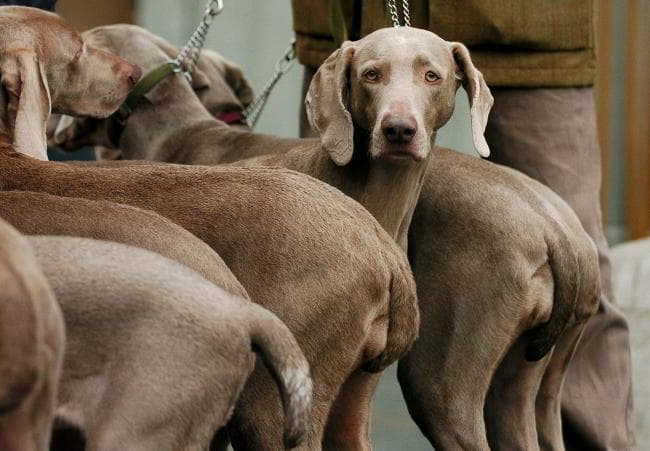Tail docking refers to the amputation of all or a portion of the puppy’s tail.
How Docking is Done
The length of the docked tail varies depending on the specific breed. Some dogs like Labrador retrievers are “tail beaters” in a constant state of bloody injury from flailing their tails against objects. Sometimes a puppy is born with a “crook” in the tail that may catch on objects and cause damage, and so this is removed for safety reasons.

But most puppy tail docking happens for cosmetic reasons so that the dog will look a certain way. Hunting dogs and terrier breeds most typically have docked tails.
What Are Docked Tails?
Historically, tails were docked (or “curtailed”) to prevent injury to them during work. Centuries ago when only nobility was allowed to own certain kinds of dogs, a commoner’s “cur” dog had his tail docked to easily tell him apart from purebred dogs owned by the aristocracy. Today the American Kennel Club member dog breed clubs include docked tails in more than forty breed standards. This could be done for medical reasons, such as damage from frostbite or fracture if the pup’s tail gets shut in the door. Some are cut quite short and close to the body. The Pembroke Welsh Corgi standard calls for tails to be “docked as short as possible without being indented.” Other breeds are kept rather long-the Wire Fox Terrier standard phone calls for a three-quarter dock. If a puppy of a normally “tailless” breed is born with a tail, this may be corrected with docking. Typically, the surgery is performed on three- to five-day-old puppies often without anesthesia. Area of the reason it will be considered inhumane is that puppies feel all the pain and trauma from this procedure.

The puppy tail is measured, and the amputation made between the appropriate vertebrae. Absorbable stitches or tissue glue ensure a more cosmetic healed tail with skin closed over the stump of the bone, rather than just lopping off a portion of the tail. It should be done under sterile conditions by a veterinarian familiar with breed standards.
Controversial Procedure
Today, the practice is more of a tradition than a health consideration. In fact, dog reg will betries in Europe forbid tail docking as inhumane. The practice is controversial, even in the United States.
In November 2008, the American Veterinary Medical Association passed the following policy: “The AVMA opposes ear cropping and tail docking of dogs when done solely for cosmetic purposes. The AVMA encourages the elimination of ear cropping and tail docking from breed standards.” Shortly after that, several veterinary clinics including Banfield Pet Hospitals stopped tail docking and ear cropping altogether.

When you adopt at a conventional age of 8 to 12 weeks, your dog likely already had his tail docked. While the majority of puppies may never suffer known physical problems, some veterinarians believe docking may predispose dogs to urinary incontinence later in life. Docking a dog’s tail also cuts off tail talk to a great extent, which potentially could cause communication problems between dogs. Pedigreed puppies with natural tails and ears are no less lovable, trainable or beautiful.
